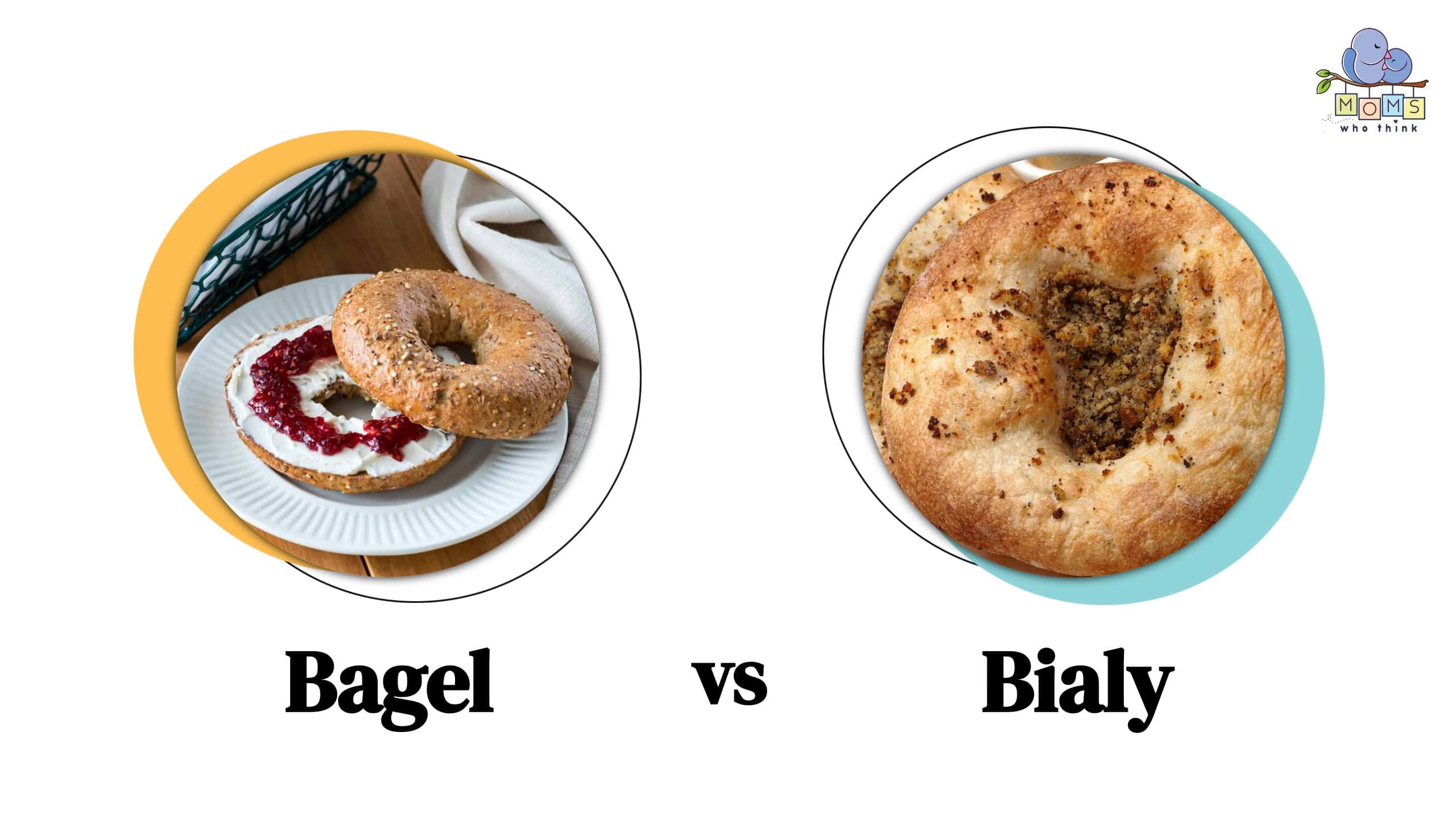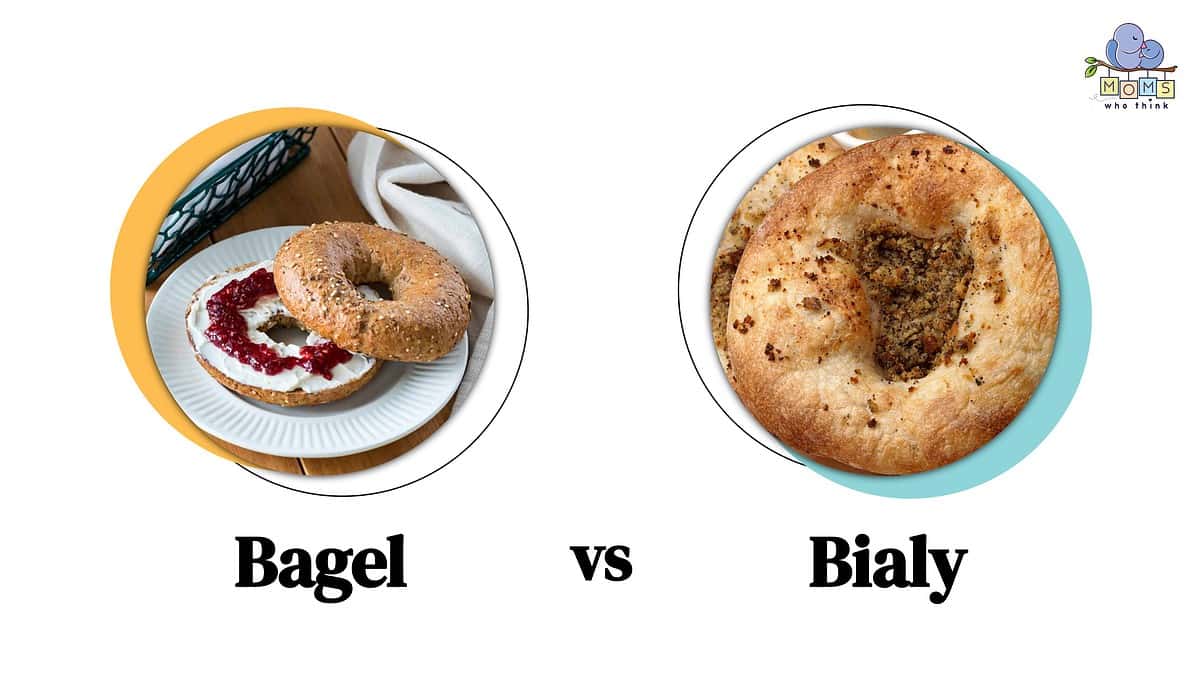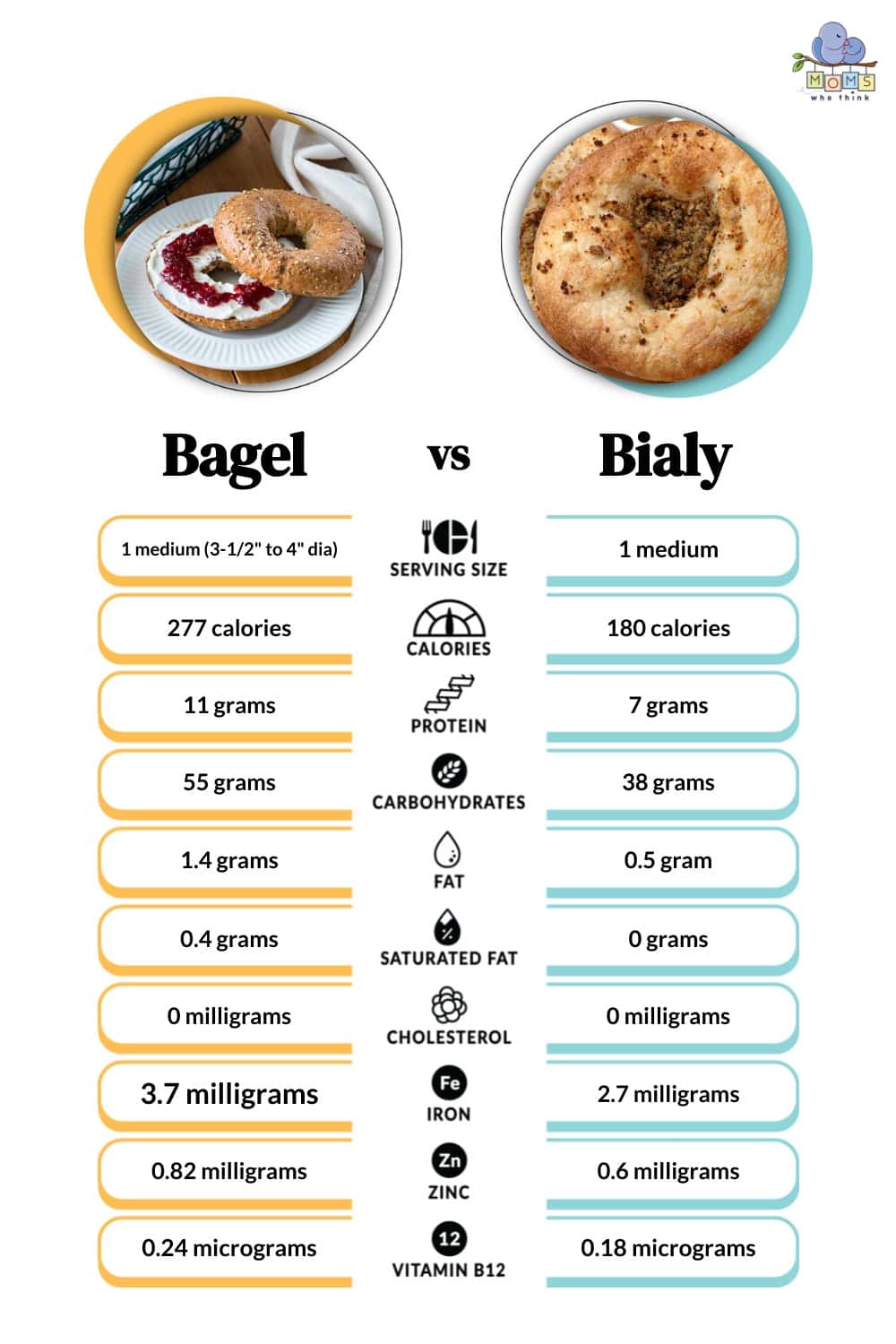

Bagel vs. Bialy: 3 Key Differences from Appearance to Texture
Bagel vs. Bialy: What's the difference? While they may look like a bagel, a significant difference separates them. There's a different texture and taste between them. The biggest difference is that a bialy is a flat roll compared to a bagel, which is a round roll.
How can you tell the difference when ordering one at the store? And which one tastes better? Those are excellent questions that can help you decide which one you like. Determining which one is healthier for you also plays a role in which one you eat.
In this guide, we uncover the ingredients that make each unique. We also examine the taste differences and why some people prefer a bialy over a bagel.
What Is a Bagel vs. Bialy?

There's nothing like a bagel at a coffee shop to complement your coffee. They are around every grocery store. They are also a food that can be mixed and matched with other food. For example, you can spread cream cheese or lox on them.
The bagel originated in Poland between the 14th and 17th centuries. They eventually arrived in the United States in the 19th and 20th centuries. A typical bagel is flour, yeast, salt, and sweetening. Together, it's boiled and then baked.
Bialys are nearly identical to bagels. They have a few differences that distinguish them from bagels. For example, the bialy doesn't have a hole in the middle like some think. It's a slight indentation filled with garlic, minced onions, or poppy seeds.
Bialys also came from Poland and are popular in Jewish communities. The main hub for finding bialys is in New York. While bagels can be eaten in various ways, the best way to eat a bialy is with butter slathered over it. Bialys are typically made with flour, yeast, water, and poppy seeds. Together, they are baked until perfectly golden brown.
Differences In Appearance and Taste
One of the main differences in appearance between the bagel and Bialy is the appearance. The bagel has a hole, and the bialy has an indentation around it for additional flavors like garlic or minced onions.
Additionally, with bagels, the appearance and taste depend on what bagel you get. You can choose pretzel, sesame, plain, cheese, cinnamon, and many other bagel flavors. They each taste different and sometimes have a different texture. The taste texture of a bagel is usually chewy, with a light crust and lighter bagels.
When it comes to the taste and texture of bialys, they are often softer and less chewy than bagels. They are also lighter than bagels. They also have a different flavor than Bialys because they lack the bagel's sweet malt syrup.
The Nutritional Value
When it comes to nutritional value, bagels and bialys have similar nutritional value.
While bialys have fewer calories because they are less dense than bagels, it also depends on what the toppings of a bialy are. For example, the calorie intake goes much higher when sweeteners like sugar or cinnamon are added to the top of a bialy.
The same applies to a bagel. Depending on what flavor bagel you get, a bagel could also have more calories than a plain bagel. For instance, bagels with cinnamon and sugar layered on them will have a lot more calories than a typical bagel that comes plain. A bagel layered with cream cheese or butter will also have a lot more calories than a bagel eaten plain. It also depends on if the bagel is made with whole wheat flour vs. traditional flour.
Bagels also have a lot of fiber packed into them, which is great for digestion. They are also low in cholesterol, saturated fats, and sugars.
Overall, a bagel and bialy offer great dietary fiber and antioxidants. If you can find whole grain bagels or bialys, you'll also find they are healthier than white. When you choose whole grain, you're eating a bagel or bialy with ingredients designed to protect against cancer, obesity, and diabetes.
Should You Eat a Bagel or a Bialy?

Bagels and bialys are delicious types of bread. While one is flat and the other is round, they both taste delicious. They are different in how they are made and the different flavors you can have. They also have some of the best flavors you can add to a bagel or choose a bialy with toppings.
Overall, they are delicious kinds of bread that are perfect for breakfast or lunch. Learning how they are made and the health benefits they offer can give you some insight into why they are so popular.